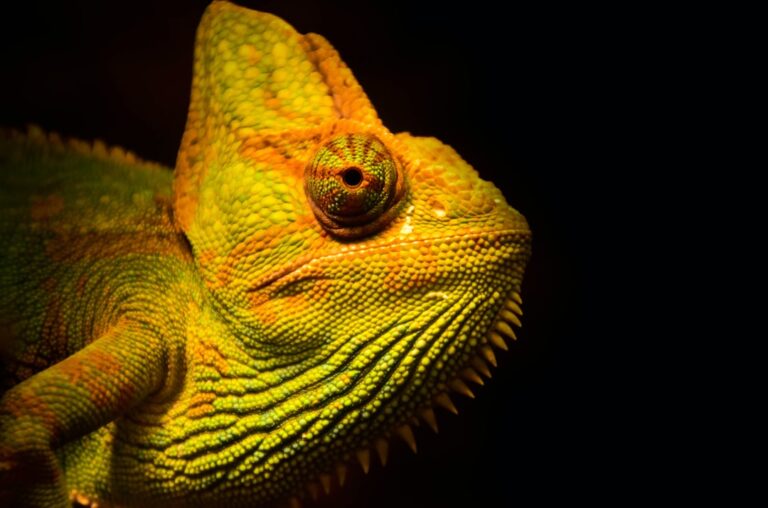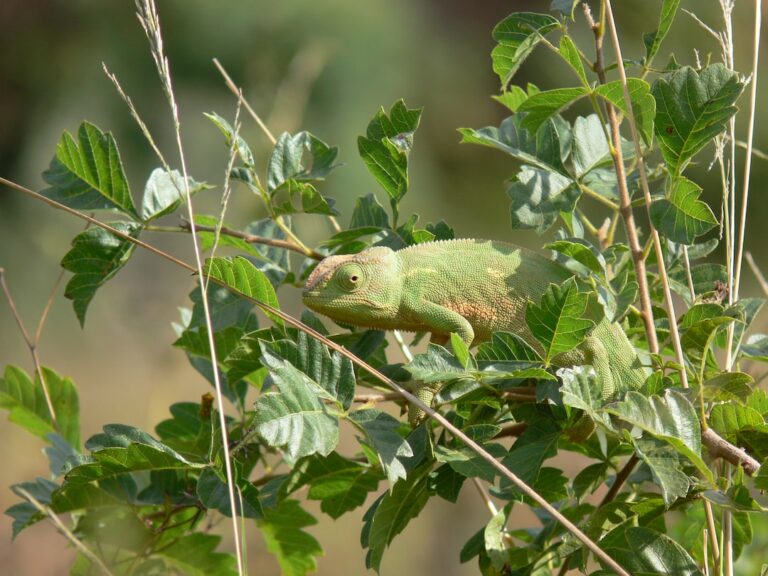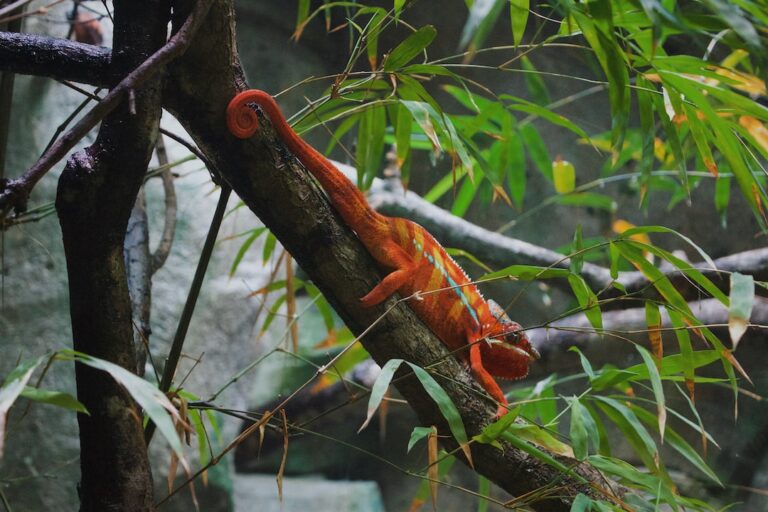Can Chameleons Eat Spinach?
Chameleons are fascinating creatures known for their ability to change color and blend into their surroundings. These reptiles are native to Africa, Madagascar, and parts of Asia, and they have unique dietary needs. In the wild, chameleons primarily feed on insects, but in captivity, it is important to provide them with a balanced diet that includes a variety of foods. Leafy greens are often recommended as part of a chameleon’s diet, and spinach is one of the most commonly suggested options. However, there is some debate about whether or not chameleons can effectively digest leafy greens like spinach.
Table of Contents
The Nutritional Value of Spinach for Humans and Animals
Spinach is often hailed as a superfood due to its high nutritional content. It is rich in vitamins A, C, and K, as well as minerals like iron and calcium. These nutrients are essential for maintaining overall health and supporting various bodily functions. Spinach is also low in calories and carbohydrates, making it a popular choice for those looking to maintain a healthy weight or manage certain health conditions.
When it comes to animals, spinach can also provide valuable nutrients. Many herbivorous animals, such as rabbits and guinea pigs, can safely consume spinach as part of their diet. The high fiber content in spinach helps promote healthy digestion in these animals. Additionally, the vitamins and minerals found in spinach can contribute to their overall well-being.
Can Chameleons Digest Leafy Greens Like Spinach?
Chameleons have unique digestive systems that are adapted for their insect-based diet. Their digestive tracts are relatively short, which allows them to quickly process the high-protein insects they consume in the wild. However, leafy greens like spinach contain a high amount of fiber that can be difficult for chameleons to digest.
Research on chameleons and leafy greens is limited, but some studies suggest that chameleons may struggle to digest these types of foods. In one study, researchers found that chameleons fed a diet high in leafy greens had slower digestion and lower nutrient absorption compared to those fed a diet of insects alone. This suggests that chameleons may not be able to effectively break down and utilize the nutrients in leafy greens like spinach.
The Potential Risks of Feeding Spinach to Chameleons
One of the main concerns with feeding spinach to chameleons is its high oxalate content. Oxalates are naturally occurring compounds found in many plants, including spinach. In high amounts, oxalates can bind to calcium and form crystals, which can lead to the development of kidney stones or other health issues in reptiles.
Chameleons are particularly susceptible to the negative effects of oxalates due to their unique physiology. They have a specialized kidney structure that allows them to conserve water, but it also makes them more prone to developing kidney stones. Feeding spinach or other foods high in oxalates to chameleons can increase their risk of developing these painful and potentially life-threatening conditions.
In addition to the risks associated with oxalates, there are other potential dangers of feeding spinach to chameleons. Spinach is also high in nitrates, which can be toxic in large amounts. Feeding too much spinach or other leafy greens can lead to nitrate poisoning in chameleons, causing symptoms such as weakness, lethargy, and difficulty breathing.
Alternatives to Spinach for Chameleon Diets
Given the potential risks associated with feeding spinach to chameleons, it is important to consider alternative options for leafy greens in their diet. There are several safe alternatives that provide similar nutritional benefits without the potential drawbacks.
Some suitable leafy greens for chameleons include collard greens, mustard greens, and dandelion greens. These greens are lower in oxalates and nitrates compared to spinach, making them safer options for chameleons. They also provide a good source of vitamins and minerals that are essential for their overall health.
How to Properly Prepare Spinach for Chameleons
If you choose to feed spinach to your chameleon, it is important to properly prepare it to minimize the risks associated with oxalates and nitrates. Start by thoroughly washing the spinach leaves to remove any dirt or pesticides. It is also recommended to blanch the spinach by briefly immersing it in boiling water and then immediately transferring it to an ice bath. Blanching can help reduce the oxalate content in spinach.
After blanching, you can chop the spinach into small pieces to make it easier for your chameleon to eat. It is important to serve the spinach in moderation and as part of a varied diet that includes other safe foods for chameleons.
Understanding the Importance of Variety in a Chameleon’s Diet
Feeding a varied diet is crucial for chameleons to ensure they receive all the necessary nutrients for optimal health. While leafy greens can be a part of their diet, they should not be the sole source of nutrition. In the wild, chameleons have access to a wide range of insects, which provide essential proteins and fats.
In addition to leafy greens, chameleons should be offered a variety of insects such as crickets, mealworms, and waxworms. These insects are rich in protein and other nutrients that are vital for chameleon growth and development. It is important to gut-load these insects with nutritious foods before feeding them to your chameleon to ensure they receive optimal nutrition.
Tips for Observing Your Chameleon’s Response to Spinach
When introducing spinach or any new food to your chameleon’s diet, it is important to closely monitor their response. Some chameleons may tolerate spinach well, while others may experience digestive issues or other adverse reactions. Signs that your chameleon may not be tolerating spinach well include diarrhea, lethargy, loss of appetite, or changes in behavior.
If you notice any of these signs, it is best to remove spinach from their diet and consult with a veterinarian who specializes in reptile care. They can provide guidance on alternative foods and help ensure your chameleon’s health and well-being.
Other Foods to Consider Adding to a Chameleon’s Diet
In addition to leafy greens and insects, there are other safe foods that can be added to a chameleon’s diet to provide variety and ensure they receive all the necessary nutrients. Some suitable options include fruits like papaya, mango, and berries, as well as vegetables like squash and bell peppers. These foods can provide additional vitamins and minerals that contribute to a balanced diet for chameleons.
It is important to note that fruits should be offered sparingly due to their high sugar content. Too much sugar can lead to obesity and other health issues in chameleons. Vegetables should also be offered in moderation, as they can be more difficult for chameleons to digest compared to insects.
Balancing Nutrition and Safety in a Chameleon’s Diet
Feeding a balanced and varied diet is essential for the health and well-being of chameleons. While spinach may offer some nutritional benefits, it is important to consider the potential risks associated with its high oxalate content. There are safer alternatives available, such as collard greens and mustard greens, that provide similar nutritional value without the potential drawbacks.
When introducing any new food to your chameleon’s diet, it is important to closely monitor their response and consult with a veterinarian if any issues arise. By providing a balanced diet that includes a variety of safe foods, you can ensure that your chameleon receives all the necessary nutrients for optimal health and longevity.
If you’re interested in learning more about chameleons and their dietary habits, you might also want to check out this article on Reptile Friend: “Can Chameleons Eat Superworms?” Superworms are a popular choice for feeding reptiles, but are they suitable for chameleons? Find out more about the nutritional value and potential risks of feeding superworms to your chameleon by clicking here.







